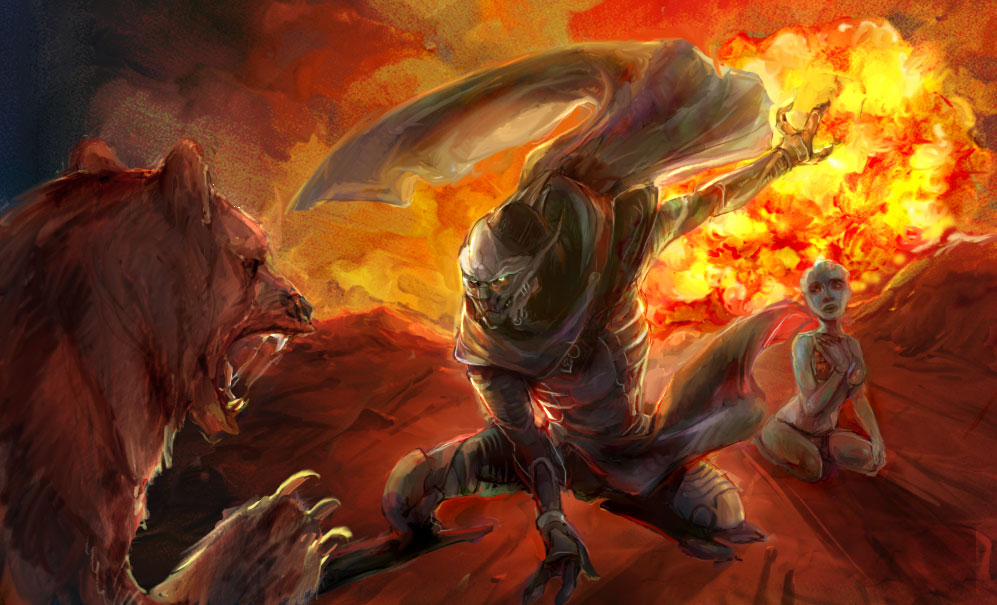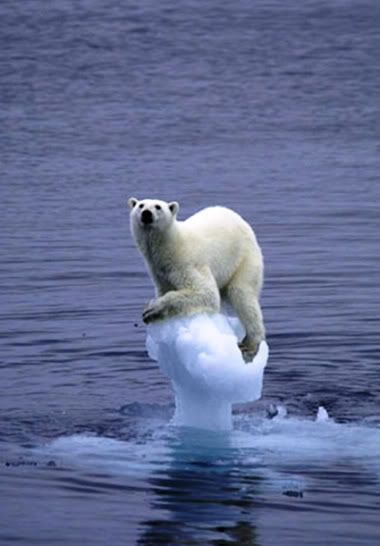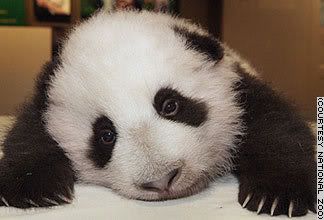Holy crap this is amazing. I can already tell the wait between strips is going to be unbearable.Bear related comics at the Abominable Charles Christopher, which everyone should read: The Abominable Charles Christopher - A Webcomic by Karl Kerschl
The Bear Thread
- Thread starter FnordBear
- Start date
- Status
- Not open for further replies.
More options
Export thread
E
Element 117
smooth recover, there. That could have gotten grisly.It's pretty consistently updated Wednesdays, which is kind of amazing given the art.
North_Ranger
Staff member
In the ancient Finnish pagan tradition, the bear hunt was considered the greatest hunt of all. And it was no easy task back then, when the most powerful projectile weapon was the crossbow and most people used hunting spears to take down a bear. It was a communal hunt, often with shamanistic overtones.
Usually, after the bear was killed, its spirit would be placated with ritual chants, telling the spirit not to be angered, that its death was not caused by the hunters, but was an accident or the bear's own fault. The corpse would then be carried in procession back to the village, where it would be skinned and prepared for a feast. The feast was not actually about killing the bear; it was karhunpeijaiset, 'the funeral of a bear', sending the spirit of the bear on so it could come back in the next life and be once again game for the huntsmen. In some cases, the bear's skull and pelt would be treated as honoured guests and given food and drink during the feast, or the skull was taken to a ceremonial pine tree through which its spirit could return to the woods. Sometimes the bear would even be 'given' a wife - a young girl who would sing and tend to the bear's meat as it was prepared. In the peijaiset itself, women were often not allowed as it was believed that the spirit of the bear was so potent that it could impregnate women who ate bear meat. During or after the feast the bear's teeth would be divided among the hunters as powerful talismans.
In addition, the bear is greatly revered in Finnish folk tradition and (neo)pagan beliefs. The bear was considered the king of the forest, and the favoured animal of Tapio, god of the woods. Some traditions also believe in actual kinship between bear and man, that the two were somehow related (hence another reason why the bear could impregnate women). And while the actual worship of the bear as a demigod or a powerful shamanistic spirit is no more, the tradition of holding peijaiset after a succesful bear hunt is still very much alive in modern-day hunting societies.
Usually, after the bear was killed, its spirit would be placated with ritual chants, telling the spirit not to be angered, that its death was not caused by the hunters, but was an accident or the bear's own fault. The corpse would then be carried in procession back to the village, where it would be skinned and prepared for a feast. The feast was not actually about killing the bear; it was karhunpeijaiset, 'the funeral of a bear', sending the spirit of the bear on so it could come back in the next life and be once again game for the huntsmen. In some cases, the bear's skull and pelt would be treated as honoured guests and given food and drink during the feast, or the skull was taken to a ceremonial pine tree through which its spirit could return to the woods. Sometimes the bear would even be 'given' a wife - a young girl who would sing and tend to the bear's meat as it was prepared. In the peijaiset itself, women were often not allowed as it was believed that the spirit of the bear was so potent that it could impregnate women who ate bear meat. During or after the feast the bear's teeth would be divided among the hunters as powerful talismans.
In addition, the bear is greatly revered in Finnish folk tradition and (neo)pagan beliefs. The bear was considered the king of the forest, and the favoured animal of Tapio, god of the woods. Some traditions also believe in actual kinship between bear and man, that the two were somehow related (hence another reason why the bear could impregnate women). And while the actual worship of the bear as a demigod or a powerful shamanistic spirit is no more, the tradition of holding peijaiset after a succesful bear hunt is still very much alive in modern-day hunting societies.
It's good to be the shaman.Bears impregnated Finnish women? DEAD bears?
J
Jiarn
Wow.
Just.
Wow.
Just.
Wow.
North_Ranger
Staff member
Well a lot of guys I know are quite hairy...Bears impregnated Finnish women? DEAD bears?
panda attack!
Dave
Staff member
That lady is stooooooooopid.
Get her Binky!
And what the hell was this woman thinking?
E
Element 117
are we expanding the meaning then?
No! Don't say Panda or else we'll...


- Status
- Not open for further replies.












